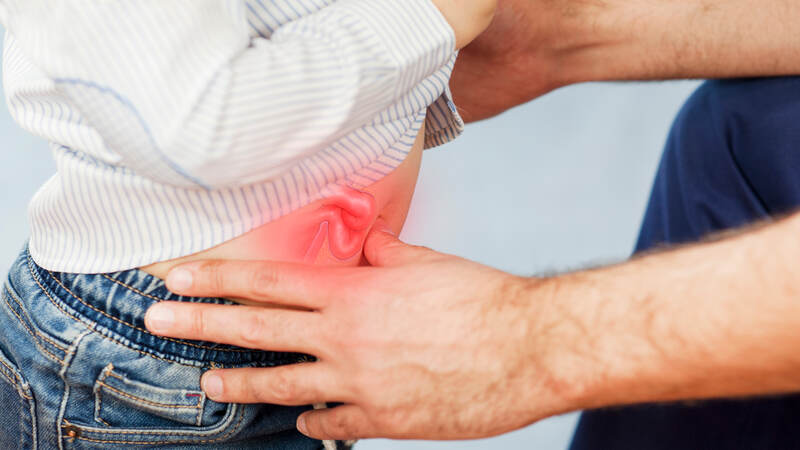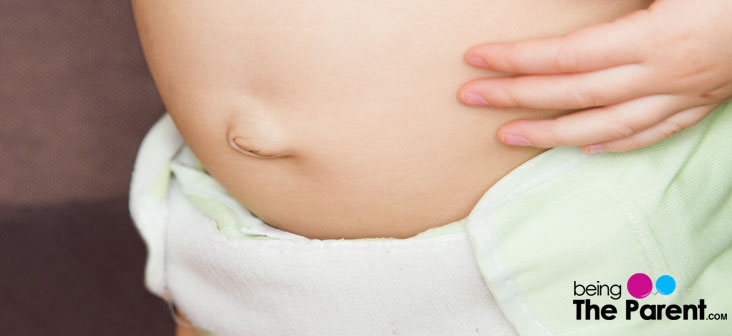
It is a surprising fact that hernias are common in children just like in the case of adults. Babies, particularly preemies, are even found to born with a hernia. The good news is that the hernias in children can be easily treated. Do you know that hernia repair is one of the most commonly performed childhood surgeries? However, recognizing symptoms of hernia in children is significant for getting effective treatment on time and thereby providing fast relief. Read here to know all about hernia in children.
What Is Hernia In Children?
A part of a tissue or organ in the baby’s body (such as a portion of intestine) may thrust through an opening or spot that is weakened in the muscle wall. This protrusion, which looks like more like a lump or a bulge, is known as hernia.
Causes Hernia In Children
Unlike the hernia seen in adults (where nearby tissues are protruded through the weak spot in a muscle wall), a weakness in the muscle wall is not necessarily the reason of hernia in children. Some babies may have several small openings in their body when they born that will shut itself at some point of time. In such children, hernia can appear in areas that have not yet shut.
Other reasons include:
- Tissues can press through the openings in the muscle wall that are only intended for arteries
- Any kind of injury or any strain during the delivery can create a frail spot in the muscle wall of the baby. This increases the chances of the part of an organ that is closely located to push into the injured spot creating a bulge and causing hernia
What Are The Different Types Of Hernia In Children?
The two most common kinds of hernias in children are:
- Umbilical hernia: An umbilical hernia occurs when a portion of the intestine squeezes through the belly button area of the abdominal wall which is weak when the baby is born. It usually occurs during the initial couple of weeks or months of a baby’s life. It is more common in baby girls and in low birth weight babies. These hernias can be anywhere from 1/2 an inch to more than 2 inches in size. In most cases umbilical hernia pose no discomfort to the babies and rarely obstructs. In the normal course, a doctor can easily push it back in. Umbilical hernias, even the larger ones, tend to resolve on their own by the time the child becomes 2 years old. So most doctors advise on waiting and watching before they treat it through a surgery
- Inguinal hernia: In case of inguinal hernia, a lump or bulge is noticed near the groin area when an opening or spot that is weakened in the abdominal wall has the intestine or bladder thrusting through it. Inguinal hernia usually shows up during infancy and can be large or small. It can be seen on one side of the groin or in some case on both the sides.. Baby boys who are born premature are more prone to inguinal hernia. In them it will appear in the area between the abdomen and the scrotum. Inguinal hernia can appear in baby girls too. It appears in abdominal cavity that connects the labia. When baby strains during a bowel movement, cries or coughs, the size of the hernia tends to increase and make it more visible. In most cases, inguinal hernia requires a surgery
Diagnosing Hernia In Children
Your child’s doctor will do a physical exam to diagnose hernias. The doctor will examine to determine the type of hernia, the size and shape and see if the hernia can be pushed back. He may even perform an X- ray or ultrasound in order to examine the intestine more closely.

Signs And Symptoms Of Hernia In Children
The common signs of hernia in children are:
- When the child is stressing his or her abdomen while standing, coughing, or even crying, a bulge is prominently visible but this bulge is absent when the child is sleeping or resting then in this is a symptom of hernia
- Swollen, red or blue colored inflamed, and extremely painful bulge accompanied by fever indicates a strangulated hernia
- A bulge accompanied with pain, constipation, or vomiting and fever can be indications of an incarcerated hernia, which needs immediate medical attention as the abdominal tissues or part of intestine becomes trapped so that it cannot be pushed back. An incarcerated hernia is a potentially life-threatening condition
- The groin area suddenly becomes swollen. In boys the swelling will be visible in the scrotum
Treating Hernia In Children
A doctor must assess all hernias. Over a period of time, umbilical hernias usually resolve on their own without any special treatment. However, inguinal hernias more often than not require a surgery as most of the time they can progress toward becoming incarcerated or strangulated. The doctor likewise can suggest an immediate surgery for putting the herniated tissue back in its right space and repairing the abdominal weak spot and keep the hernia from occurring again. Surgery to rectify inguinal hernias can be executed on kids of all ages, including premature babies. The period of recovery after surgery is short and fast for kids. During this period the child is advised to keep away from doing any kind of strenuous activities like riding a bicycle, climbing trees, jumping etc. If you notice any kind of swelling, bleeding, discomfort or fever, seek medical attention immediately.
FAQ’s
1. Can Children Get Hernia?
Yes, they can. They can even have it at birth. Injuries as they grow can also cause this.
2. Is Hernia in Children Common?
Yes, it is. Many new born babies have it too. They can be small or serious.
3. Will Hernia in Children Recover Completely?
Children recover better than adults. Hernia might cause trouble years later. Some people don’t have any issues at all.
4. Will Hernia in Children Affect Their Physical Development?
Initially yes. They will be asked to keep away from strenuous activities. They can slowly expand their activities.

